#Καλλιστώ
Text

Here is my sketch of Callisto- A.K.A. the constellation Ursa Major!
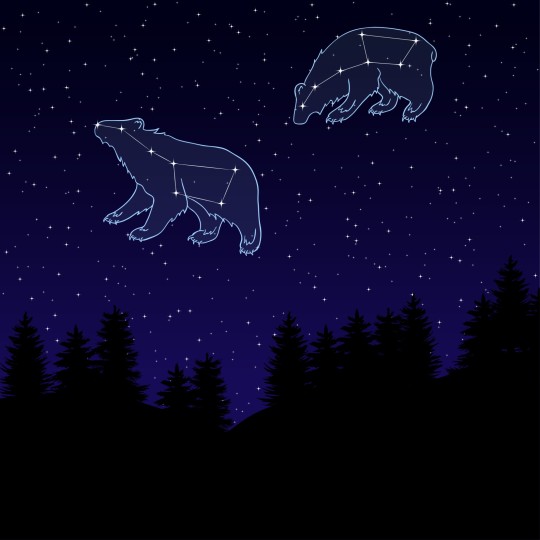


As the myth goes, Callisto was a nymph in Artemis's sacred entourage of female hunters. There are many versions of this tale involving how she was tricked, who turned Callisto into a bear, how her son died, and how she died. In fact, some say the myth dates all the way back to prehistoric times.
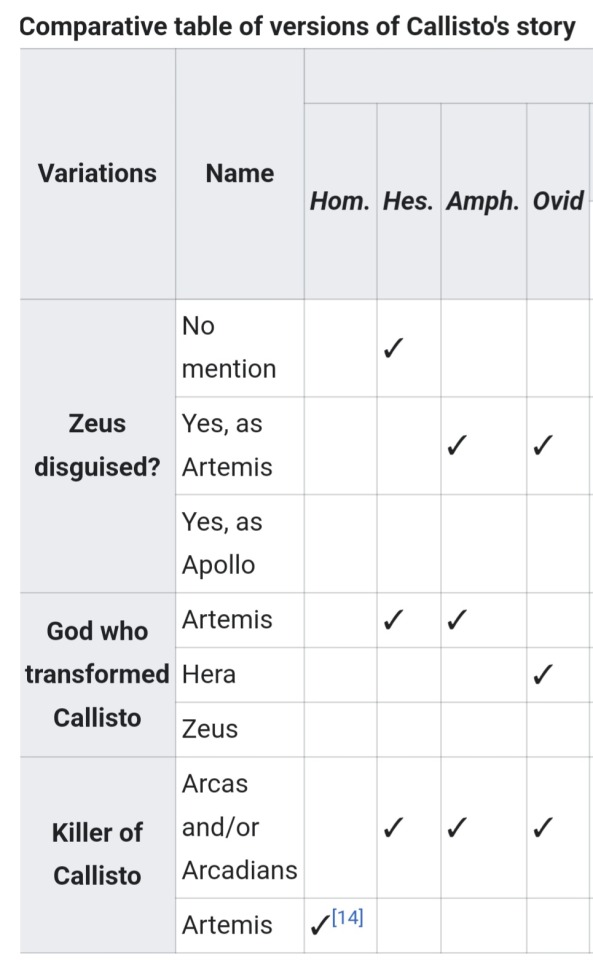
Callisto, Καλλιστώ, means "Most Beautiful" in greek. Artemis was called 'Artemis Kalliste' - Artemis the most beautiful. Many say this is how Callisto got her name. The ancient city of Arcadia was named after Arcas(Αρκάς), the little bear.


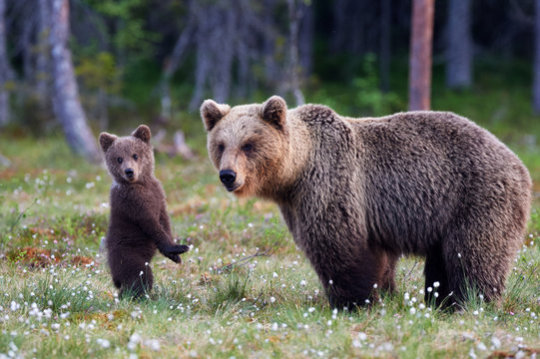
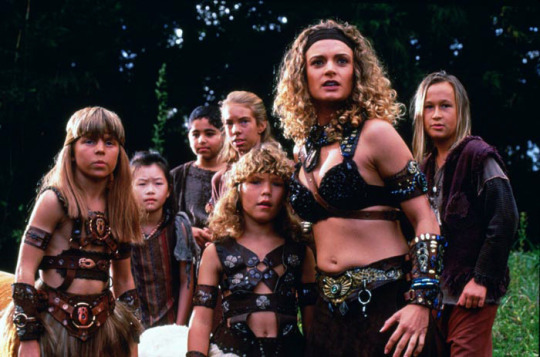
For fun, I based my sketch on Epiphany from Xena the Warrior Princess, who also has an animal son and a tragic story.

Well, that's my art and history rant! 🐍💕
I hope you enjoyed!
#ancient greece#greek mythology#ancient history#mythology#goddess#greek gods#feminism#mythology and folklore#constellations#history rant#xena warrior princess#epiphany#Castillo#ursa#ursa major#ursa minor#artemis#greek myth art#mythological creature#creatuanary#creatuanary2024#greek#myth#sketchbook#callisto
38 notes
·
View notes
Text
Storie di Orse
Callisto era una bellissima ninfa. Che fosse bella, lo dice il suo stesso nome: Καλλιστώ, la più bella. Era una ninfa di Artemide, abilissima cacciatrice. Il suo mito è raccontato sia da Eschilo (opera persa, ma Eratostene di Cirene riporta la versione di Esiodo nei suoi Catasterismi), sia da Anfide, commediografo ateniese contemporaneo di Platone, nella sua Kallisto (perduta anch'essa, ma riassunta in un'altra opera, De Astronomia).
Il mito è questo: essendo al corteggio di Artemide, era a lei legata e, come la Dea, vergine. Un giorno, dopo una caccia stancante, era stesa senza faretra su un prato di un boschetto, quando capitò lì Zeus. Il Re degli Dei, con la consueta furbizia e cupidigia, prese le forme della dea, e la ninfa "ne accettò l'amore" (ovviamente la situazione è più violenta, ma tant'è atteniamoci alla favola). Questo punto è importante perchè è forse l'unico esempio di seduzione omosessuale femminile, e secondo alcuni studiosi era simbolico di riti iniziatici femminili scomparsi verso il I° millennio a.C. (tesi suggestiva si, ma piuttosto eterea). La ninfa rimase comunque incinta. Ma non lo disse ad Artemide, fino a quando, mesi dopo durante un'altra battuta di caccia, la Dea chiese alle ninfe di fare un bagno rigenerante: fu allora che scoprì la gravidanza della ninfa (un meraviglioso quadro di Tiziano ferma questo momento, del 1556-1559, conservato presso il Kunsthistorisches Museum di Vienna)

Scoperto il fatto, Artemide la scaccia: offesa e adirata, la trasforma in orsa.
Ovidio nelle Metamorfosi (che è un libro da tenere e leggere ogni tanto) narra che Callisto fu inizialmente avvicinata da Giove (Zeus per i greci) sotto le sembianze di Diana (Artemide greca), ma che, una volta accortasi della passione di questo, tentò di fuggire, costringendo il dio a riassumere il suo vero aspetto per prenderla con la forza. Uscita dal boschetto dove si trovava, Callisto notò Diana che la chiamava ma, per paura che potesse trattarsi di un nuovo travestimento di Giove, si rifiutò di avvicinarsi finché non vide il resto del corteo avvicinarsi, al che, convinta dell'identità della dea, si riunì al gruppo. Dopo tempo e in una nuova battuta di caccia, Diana propose di fare il bagno presso una fonte. Callisto tentò di nascondersi dietro alle altre ancelle per occultare il fatto di essere incinta, ma venne infine scoperta e Diana, adirata, la scacciò. Callisto diede quindi alla luce il figlio di Giove, Arcade, e solo allora Giunone (Era per i greci), infuriata per la messa al mondo di un figlio illegittimo del marito, la trasformò in un'orsa. Il figlio fu trovato da dei cacciatori e portato al re Licaone. Callisto vagò nei campi e nei pressi degli uomini ma avendo le sembianze di un orso fu temuta e scacciata sia dagli uomini che dai cani (in questo caso, il mito segue evemeristicamente il naturale comportamento dell'animale con l'uomo e gli animali addomesticati). Similmente, nella natura, era lei stessa a fuggire dalle altre bestie selvagge, compresi i lupi, "nonostante suo padre fosse un lupo", poichè secondo Ovidio era figlia di Licaone, Re della Pelasgia. Quindici anni dopo riconobbe il figlio Arcade che si era addentrato nella foresta per cacciare, ma quando cercò di avvicinarsi questo spaventato tentò di colpirla con una lancia nel petto. Giove, tuttavia, non permise il crimine di un figlio che uccide la propria madre, e mandò un vento che li sollevò entrambi da terra e lì collocò come costellazioni in cielo. Callisto diventò l'Orsa Maggiore, Arcade l'Orsa Minore. Giunone, infuriata nel vedere i due venire onorati con questa condizione, si recò da Teti e Oceano per chiedere che impedissero a madre e figlio di riposarsi nelle loro acque tramontando: si dice infatti che le due costellazioni "non si lavano nelle onde" poichè non scendeno mai sotto l’orizzonte, dove si riteneva vi fosse l’oceano. L’Orsa Maggiore è infatti alle latitudini mediterranee una costellazione circumpolare, di quelle cioè che non tramontano mai, non si inabissano sotto la linea dell’orizzonte.
Non tutti i favolisti seguono questo finale, poichè Arcade è riconosciuto un eroe greco importantissimo: infatti successe a Nittimo (figlio di Licaone, che per i favolisti greci era padre di sua madre Callisto, quindi suo nipote), e come nuovo re introdusse la coltivazione dei campi (che aveva imparato da Trittolemo, re degli Eleusi, e conoscitore dei famosi Misteri Eleusini), insegnando ai sudditi a fare il pane, a filare e a cucire i vestiti. Dopo di lui, la terra precedentemente chiamata Pelasgia fu chiamata Arcadia, e il suo popolo gli Arcadi. L'Arcadia divenne sinonimo di bellezza, della forza bucolica e dove uomini e natura vivono in perfetta armonia. Solo in seguito alla sua morte fu portato vicino la madre come stella, la più brillante, nella costellazione dell'Orsa Maggiore che i Greci chiamavano Arctophylax, Sorvegliante dell'Orsa, custode dell'amore che legava indirettamente madre e figlio.
12 notes
·
View notes
Text
0 notes
Text
Ο εφοπλιστής Λαιμός χτίζει βίλα στο κατώφλι του εθνικού πάρκου Βόρειας Πίνδου
Ο εφοπλιστής Αντώνης Λαιμός κτίζει το σπίτι του στο κατώφλι του δρυμού Βόρειας Πίνδου, χρησιμοποιώντας δρόμο μέσα στην προστατευόμενη περιοχή. Οι περιβαλλοντικές οργανώσεις δίνουν μάχη για να μην το ολοκληρώσει, αλλά οι κρατικές υπηρεσίες κάνουν ό,τι μπορούν προς την αντίθετη κατεύθυνση. Την περασμένη Τετάρτη, όταν τα σωματεία Ελληνική Εταιρεία Περιβάλλοντος και Πολιτισμού (ΕΛΛΕΤ) και Καλλιστώ…
View On WordPress
0 notes
Text
Ο εφοπλιστής Λαιμός χτίζει βίλα στο κατώφλι του εθνικού πάρκου Βόρειας Πίνδου
Ο εφοπλιστής Αντώνης Λαιμός κτίζει το σπίτι του στο κατώφλι του δρυμού Βόρειας Πίνδου, χρησιμοποιώντας δρόμο μέσα στην προστατευόμενη περιοχή. Οι περιβαλλοντικές οργανώσεις δίνουν μάχη για να μην το ολοκληρώσει, αλλά οι κρατικές υπηρεσίες κάνουν ό,τι μπορούν προς την αντίθετη κατεύθυνση. Την περασμένη Τετάρτη, όταν τα σωματεία Ελληνική Εταιρεία Περιβάλλοντος και Πολιτισμού (ΕΛΛΕΤ) και Καλλιστώ…
View On WordPress
0 notes
Text
Ο εφοπλιστής Λαιμός χτίζει βίλα στο κατώφλι του εθνικού πάρκου Βόρειας Πίνδου
Ο εφοπλιστής Αντώνης Λαιμός κτίζει το σπίτι του στο κατώφλι του δρυμού Βόρειας Πίνδου, χρησιμοποιώντας δρόμο μέσα στην προστατευόμενη περιοχή. Οι περιβαλλοντικές οργανώσεις δίνουν μάχη για να μην το ολοκληρώσει, αλλά οι κρατικές υπηρεσίες κάνουν ό,τι μπορούν προς την αντίθετη κατεύθυνση. Την περασμένη Τετάρτη, όταν τα σωματεία Ελληνική Εταιρεία Περιβάλλοντος και Πολιτισμού (ΕΛΛΕΤ) και Καλλιστώ…
View On WordPress
0 notes
Text
Ο εφοπλιστής Λαιμός χτίζει βίλα στο κατώφλι του εθνικού πάρκου Βόρειας Πίνδου
Ο εφοπλιστής Αντώνης Λαιμός κτίζει το σπίτι του στο κατώφλι του δρυμού Βόρειας Πίνδου, χρησιμοποιώντας δρόμο μέσα στην προστατευόμενη περιοχή. Οι περιβαλλοντικές οργανώσεις δίνουν μάχη για να μην το ολοκληρώσει, αλλά οι κρατικές υπηρεσίες κάνουν ό,τι μπορούν προς την αντίθετη κατεύθυνση. Την περασμένη Τετάρτη, όταν τα σωματεία Ελληνική Εταιρεία Περιβάλλοντος και Πολιτισμού (ΕΛΛΕΤ) και Καλλιστώ…
View On WordPress
0 notes
Text
Πρέσπες: Διασώθηκε αρ κουδάκι που είχε πιαστε ί σε παράνομη παγίδα αγρ ιογούρουνων
Πρέσπες: Διασώθηκε αρκουδάκι που είχε πιαστεί σε παράνομη παγίδα αγριογούρουνων
Το αρκουδάκι που διασώθηκε είναι ενός έτους και 45 κιλά Σε μια συρμάτινη θηλιά παράνομης παγίδας για αγριογούρουνα, πιάστηκε αρκουδάκι στις Πρέσπες, που χάρη όμως στην Ομάδα Άμεσης Επέμβασης, απελευθερώθηκε μετά από λίγες ώρες. Σύμφωνα με ανακοίνωση από την περιβαλλοντική οργάνωση «Καλλιστώ», το 1,5 έτους ζώο,…

View On WordPress
0 notes
Text
Καστοριά: Απομακρύνθηκε αρκούδα από κατοικημένη περιοχή
Καστοριά: Απομακρύνθηκε αρκούδα από κατοικημένη περιοχή
Μια αρκούδα, αρκετά εξοικειωμένη με το περιαστικό περιβάλλον, απομακρύνθηκε από τη χερσόνησο του Προφήτη Ηλία, πολύ κοντά στην πόλη της Καστοριάς, στο πλαίσιο επιχείρησης της θεσμοθετημένης Ομάδας Άμεσης Επέμβασης στην οποία συμμετέχει η περιβαλλοντική οργάνωση «Καλλιστώ», και σε συνεργασία με τη Διεύθυνση Δασών Καστοριάς.
Η αρσενική αρκούδα, ηλικίας περίπου 4-5 ετών, προσέγγιζε επανειλημμένα από…
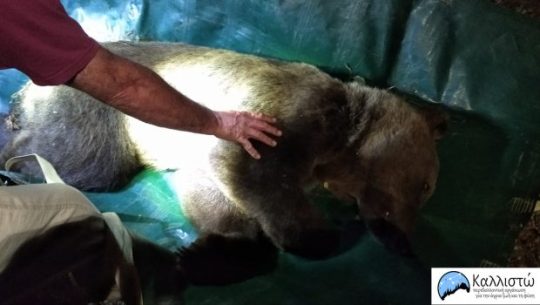
View On WordPress
0 notes
Photo
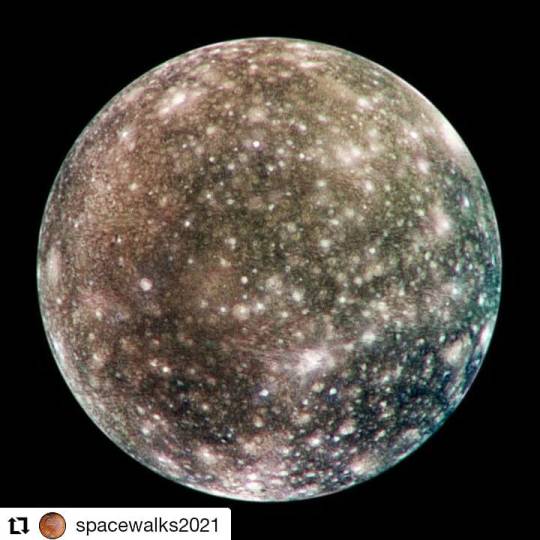
#Repost @spacewalks2021 • • • • • • Σήμερα θα γνωρίσουμε άλλη μια "γυναίκα" του διαστήματος, την Καλλιστώ! (EN in comments) Η Καλλιστώ (αγγλικά: #Callisto) ή Δίας IV είναι ο δεύτερος μεγαλύτερος φυσικός δορυφόρος του πλανήτη Δία και ο τρίτος μεγαλύτερος στο Ηλιακό Σύστημα. Ανακαλύφθηκε από τον #Γαλιλαίο στις 7 Ιανουαρίου 1610. Σύμφωνα με την Ελληνική μυθολογία η #Καλλιστώ ήταν νύμφη της Αρκαδίας την οποία ερωτεύτηκε ο Δίας. Η Ήρα για να την τιμωρήσει τη μεταμόρφωσε σε αρκούδα. Ο Δίας την λυπήθηκε και την τοποθέτησε στον έναστρο ουρανό εκεί που τώρα είναι ο αστερισμός της Μεγάλης Άρκτου. Η Καλλιστώ κινείται σε απόσταση από τον Δία 1.882.700 χιλιομέτρων και σε επίπεδο που σχηματίζει γωνία 2° 43΄ με το επίπεδο του ισημερινού του Δία. Η πραγματική του διάμετρος ανέρχεται σε 4.821 χλμ. και κινείται γύρω από τον #Δία σε γήινο χρόνο 16 ημερών, 16 ωρών, 32΄ και 8,6΄΄ της ώρας. Είναι ο λιγότερο ανακλαστικός από τους δορυφόρους του Δία. Σύμφωνα με τις μέχρι σήμερα γνώσεις μας η Καλλιστώ φέρει λεπτή και αραιήατμόσφαιρα από διοξείδιο του άνθρακα σε πολύ μεγάλο ποσοστό, ενώ η επιφάνειά της καλύπτεται από πάγο και κρατήρες. Αποτελείται από έναν βραχώδη πυρήνα που είναι περιτριγυρισμένος από έναν παγωμένο μανδύα νερού. Είναι το ουράνιο σώμα με την πιο έντονη παρουσία κρατήρων στο Ηλιακό σύστημα. Το πιο αξιοσημείωτο σημάδι πάνω της είναι ένας γιγάντιος κρατήρας που ονομάστηκε #Βαλχάλλα με διάμετρο 2.750 χιλιομέτρων. Είναι μια ξέβαθη κοιλάδα μεγάλη όσο και η Αυστραλία που περιβάλλεται από πολλαπλούς δακτυλίους. Ένας άλλος μεγάλος κρατήρας με δακτυλίους ονομάζεται Άσγκαρντ και έχει διάμετρο 1.200 χιλιομέτρων. Οι μεγάλοι κρατήρες στην Καλλιστώ έχουν ηλικία τεσσάρων δισεκατομμυρίων ετών περίπου, ενώ οι μικρότεροι είναι πιο πρόσφατοι. Το 2003 η #ΝΑΣΑ πραγματοποίησε μια εννοιολογική μελέτη που ονομάστηκε Ανθρώπινη Εξερεύνηση Εξωτερικών Πλανητών (Human Outer Planets Exploration (HOPE)), σχετικά με το μέλλον της ανθρώπινης εξερεύνησης του εξωτερικού Ηλιακού συστήματος. Ο στόχος που επιλέχθηκε να εξεταστεί λεπτομερώς ήταν η Καλλιστώ. Σε μια έκθεση το 2003, η #NASA ανακοίνωσε πως το 2040 θα μπορούσε να είναι εφικτή μια επανδρωμένη αποστολή στην Καλλιστώ. Follow us: @spacewalks2 https://www.instagram.com/p/CMPCZa9Fbbz/?igshid=k8b6223dlcn6
0 notes
Text
GUYS I FIGURED OUT WHAT YURI KUMA ARASHI IS REFERENCING
LESBIAN BEAR STORM IS BASED ON THIS MYTH ABOUT CALLISTO
In Greek mythology, Callisto or Kallisto (/kəˈlɪstoʊ/; Ancient Greek: Καλλιστώ [kallistɔ̌ː]) was a nymph, or the daughter of King Lycaon; the myth varies in such details. She was one of the followers of Artemis, or Diana for the Romans, who attracted Zeus (Jupiter). According to some writers, Zeus transformed himself into the figure of Artemis to lure Callisto and seduce her. She became pregnant and when this was eventually discovered, she was expelled from Artemis's group, after which a furious Hera (Juno), the wife of Zeus (Jupiter), transformed her into a bear. Later, just as she was about to be killed by her son when he was hunting, she was set among the stars as Ursa Major ("the Great Bear"). She was the bear-mother of the Arcadians, through her son Arcas by Zeus.
54 notes
·
View notes
Text
Τα γαλαζοπράσινα μάτια
Μου αρέσουνε τα μάτια σου.
Δες τα να γελούν
Σαν μια μικρή άβυσσο,
Που οι σκέψεις κολυμπούν.
Σαν ενα μικρό παράδεισο,
Που οι αγγέλοι τραγουδούν.
Χάνονται μες το πράσινο,
Μα εξακολουθούν να περπατούν.
Βιώνουν βροχές,
Μπόρες, καταιγίδες.
Εσύ παρόλα αυτά,
Μπόρεσες και ήρθες.
Η κατάσταση είναι άσχημη.
Εφιαλτικές οι νύχτες.
Κλείσε τα ματια σου μωρό μου.
Ξεχνά πως με είδες...
-Καλλιστώ
2 notes
·
View notes
Text
0 notes
Photo

Το μεθυστικό καλοκαίρι του 1977 μια αφελής κοπέλα, η Καλλιστώ, αναχωρεί από την Αθήνα για να γνωρίσει τον κόσμο. Μετά το ταξίδι της στην Αμερική, βρίσκεται αναπάντεχα σε ένα ελληνικό νησί που έχει μετατραπεί σε κινηματογραφικό σκηνικό. O Μπίλι Γουάιλντερ, διάσημος σκηνοθέτης του Χόλυγουντ, γυρίζει εκεί την ταινία του Fedora, και η Καλλιστώ προσλαμβάνεται ως βοηθός. Παρατηρεί συνεπαρμένη τον λαμπερό, πρωτόγνωρο για εκείνη τρόπο ζωής, βιώνοντας μια εμπειρία που θα τη σημαδέψει για πάντα.
Ενώ η Καλλιστώ είναι ενθουσιασμένη με τη νέα της περιπέτεια, ο ίδιος ο Γουάιλντερ αντιλαμβάνεται ότι το άστρο του έχει μάλλον αρχίσει να σβήνει. Το Χόλυγουντ τον απορρίπτει, και μόλις που κατόρθωσε να εξασφαλίσει χρηματοδότηση για την ταινία του, από τη Γερμανία. Η Καλλιστώ τον ακολουθεί στο Μόναχο για τα γυρίσματα των επόμενων σκηνών και τον συντροφεύει σε ένα ταξίδι αναμνήσεων που οδηγεί στον σκοτεινό πυρήνα της οικογενειακής του ιστορίας.
Σε αυτό το μυθιστόρημα, που αποτελεί ταυτόχρονα τρυφερή ιστορία ενηλικίωσης και ευαίσθητο πορτρέτο μίας από τις πιο ενδιαφέρουσες προσωπικότητες του αμερικανικού κινηματογράφου, ο Jonathan Coe στρέφει το βλέμμα του στην έννοια του χρόνου και στη σημασία της φήμης, στην οικογένεια και στην απατηλή σαγήνη της νοσταλγίας. Όταν ο κόσμος βαδίζει προς την αλλαγή, γαντζώνεσαι στην παλιά, αγαπημένη σου ζωή, ή αποφασίζεις ότι είναι ώρα να την αφήσεις πίσω;
Daily inspiration. Discover more photos at http://justforbooks.tumblr.com
4 notes
·
View notes
Text
⤷ callisto or kallisto (/kəˈlɪstoʊ/; Ancient Greek: Καλλιστώ [kallistɔ̌ː])
callisto, or jupiter iv, is the second-largest moon of jupiter, after ganymede.
nymph, daughter of lycaon, king of arcadia. one of artemis’ hunting attendants, she was transformed into a bear and turned into a constellation.
new moniker of tumblr writer outroshooky
hey there! please call me callisto from now on!
13 notes
·
View notes
Photo

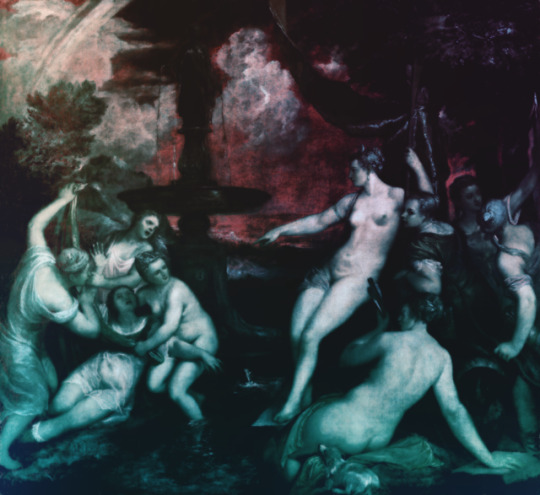
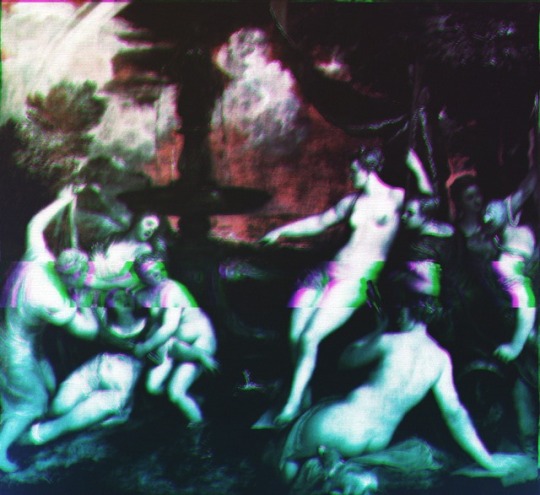
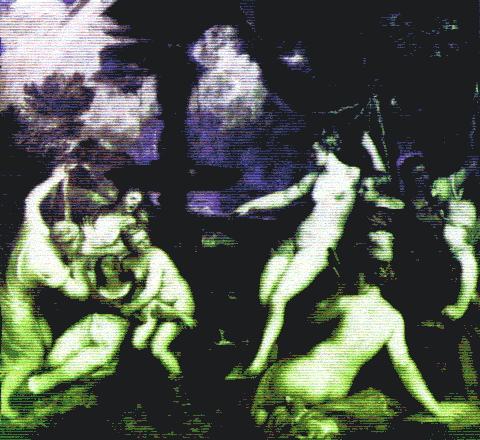
Callisto (Καλλιστώ)
Callisto consorted with Zeus and gave birth to Arcas , the eponym of the Arcadians. She was punished for being Zeus' lover, and was turned into a bear, but gained immortality by being among the stars.
In the train of Artemis
This daughter of impious Lycaon lived in Arcadia, and used to hunt in the company of Artemis to whom she had sworn to remain a maid; for a main feature of this goddess is never to yield to men.
Zeus disguised
Zeus, however, assuming the shape of Artemis, or as some say the shape of Apollo, seduced Callisto and, not wishing to be detected by jealous Hera, transformed the girl into a bear. But as jealousy has innumerable resources, Hera, having learned what had happened, asked Artemis to shoot the bear, which the latter did. There are those, however, who affirm that Artemis shot the beast after Hera had turned the girl into a bear because Callisto failed to fulfill her promise concerning her maidenhood.
"For I will take away your beauty, wherewith you do delight yourself and him who is my husband." (Hera to Callisto. Ovid, Metamorphoses 2.472).
The virgin goddess punishes Callisto
Others have said that Artemis was not satisfied with merely expelling Callisto from her train:
"Begone! and pollute not our sacred pool." (Artemis to Callisto. Ovid, Metamorphoses 2.472).
but also changed her into a bear, after noticing, when Callisto was refreshing her body in a stream, that the girl's womb had grown heavier. For she asked the girl as to the reason for her swollen form, and when Callisto, whom Zeus seduced assuming Artemis' shape, answered that it was the goddess' fault, she, angry at the girl's reply, changed her into a bear, and in this animal form she later bore her son Arcas.
Fate of mother and child
In any case, because of this intrigue Callisto died, but Zeus, in order to save her and her child from an angry mob, transformed her into the constellation Great Bear (Ursa Major), thus allowing her to gain immortality, and gave their child Arcas to Hermes' mother, the Pleiad Maia, for upbringing. Yet those who like to compare details and how they agree with each other say, for example, that the constellation is not Callisto herself, but that it was put in the sky to honor her, for, they argue, the Arcadians themselves were able to point at her grave. It is also told that the constellation of the Great Bear never sets because Tethys forbade her to dip herself in the ocean, and that this is so because Oceanus's wife Tethys hated Callisto's intrusion; for Tethys was Hera's nurse, and Callisto a concubine in Hera's bed.
Her child holds her company in the sky
Arcas , the son of Zeus and Callisto who some said was the child that impious Lycaon served Zeus at a banquet, became king, and the district of Arcadia, formerly called Pelasgia, is called after him. After his death, he was turned into the constellation Bear-Watcher (Bootes) that guards the Great Bear, but others have said that Bootes is someone else (Icarius, father of Erigone, the man who was killed by drunkards).
#occult#mythology#dark#gore#trippy#obscure#evil#creature#legendary#witchcraft#magic#folklore#greek#vaporwave#aesthetic#monster#lore#alchemy#blackandwhite#rgb#photooftheday#haunted#creepy#scary#lost#history#dead#nature#animals#fable
7 notes
·
View notes